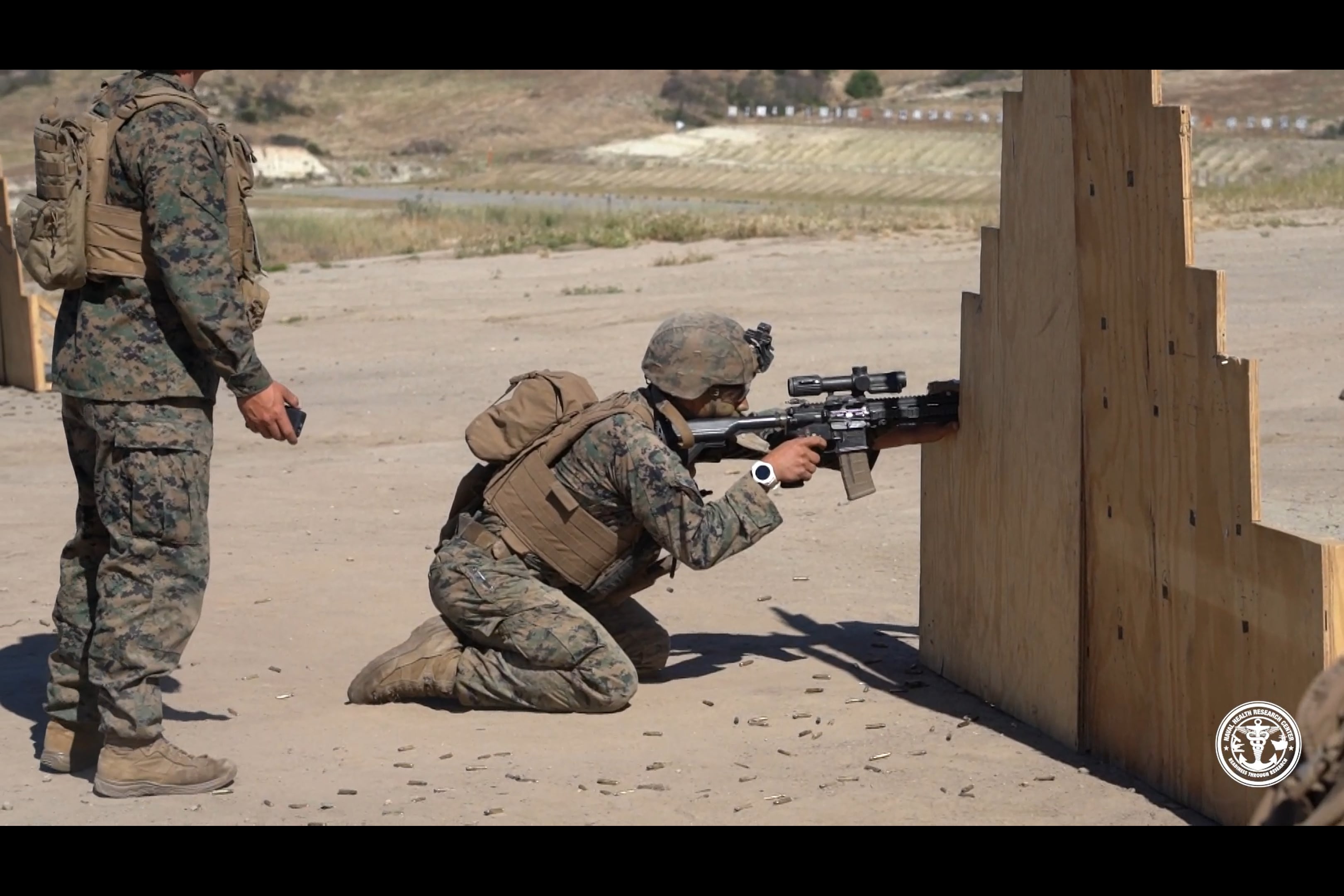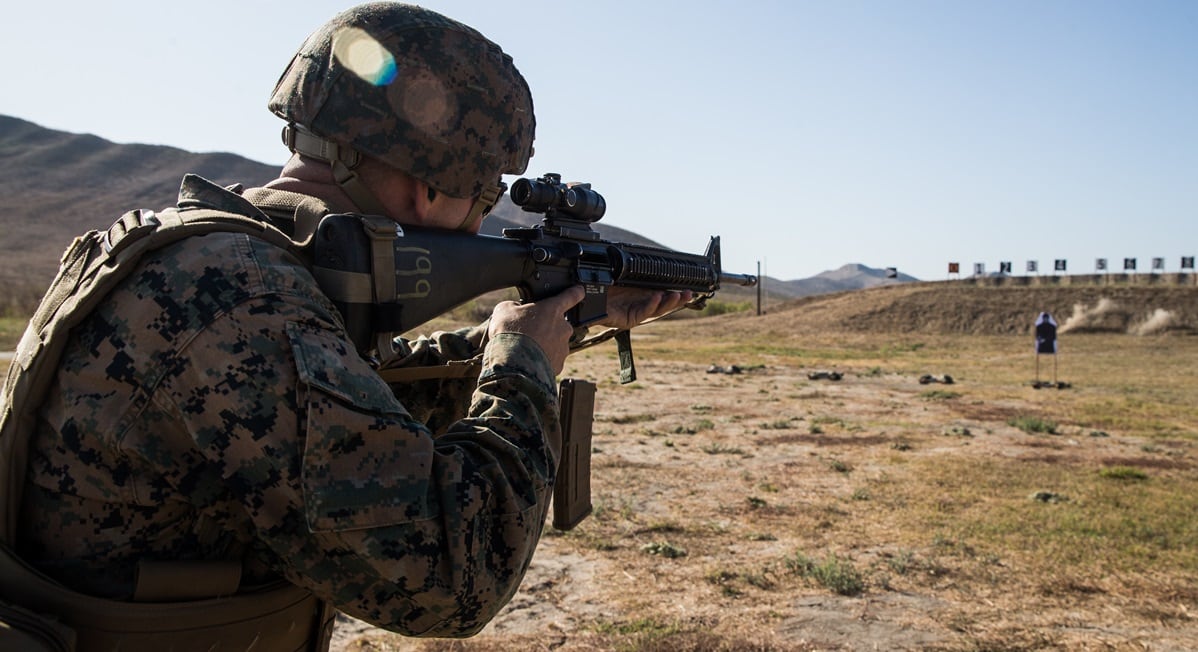As the Marine Corps moves out on a sweeping series of experiments designed to make jarheads more effective combat shooters, leaders are making a few immediate changes they believe will move the service in the right direction.
Effective right away, Marines will no longer be able to duck out of annual rifle qualification early unless they shoot expert in prequalification, according to a Marine administrative message published on Monday. Previously, Marines could submit their prequalification score as their classification regardless of how they performed.
This relatively small change underscores a plan from Training and Education Command to raise Marine Corps shooting standards, according to Col. Gregory Jones, head of Weapons Training Battalion at Quantico, Virginia.
Jones told Marine Corps Times that a policy established in 2023 allowed Marines to prequalify and leave the range in two days instead of the full three. This change, made in the name of efficiency, had allowed some troops to coast after shooting marksman, the lowest classification.
RELATED

At the fiscal 2024 Combat Marksmanship Symposium, held in October 2023, Marine Corps gunners ― senior warrant officer weapons experts ― reported some Marines were “taking a pizza box and leaving,” Jones said, using the colloquial name for the marksman badge. “And that’s just not who we are as Marines. So that was an easy change.”
Another shift announced in the new message will allow Marine recruits and student officers to use a shooting stance that had been largely banned: the magazine-supported prone position.
Marines can use the position, in which the shooter lies flat and rests the magazine of his or her rifle on the ground for balance, for the entirety of Table One, the known distance range, according to the new rules.
Previously, the magazine-supported prone position could only be used for zeroing, or adjusting sights to the desired aimpoint for various distances.
This change, Jones said, kills one of the “sacred cows” of the former Annual Rifle Training, which the annual rifle qualification replaced.
Barring Marines from resting their magazine on the deck, he said, made sense when the service used older metal magazines, which fit poorly into the rifles’ magazine wells, he said, and could cause a double feed or wear out the spring mechanism if pressure was applied. With the current polymer magazines used for all Marine rifles, including those at boot camp, that issue disappears, he said.
“IfI can rest my magazine on the deck and put full weight pressure into my rifle, I can take an accurate shot and be ready to take an accurate follow-on shot because my position is stable,” Jones said. “So basically, we’re just trying to train Marines now to shoot more accurately and efficiently.”
Iiams, Jones said, was leaning into a “fundamental shift in marksmanship” for the Marine Corps that drew a line between the Olympic-style competitive shooting standards that had long informed the services’ protocols, and the practical needs and demands of combat shooting.
It’s part of a larger shift for the Corps: a 2018 internal marksmanship assessment that exposed glaring gaps in marksmanship training and the ability to measure range performance has been driving an extensive reevaluation of what it means to excel as a shooter, as Marine Corps Times has previously reported.
A Naval Health Research Center marksmanship study is now ongoing, and the service is investing in advanced marksmanship simulators that promise to deliver better data on how Marines shoot and how they can improve.
In the case of the magazine-supported prone position, Jones said, the Marines were being instructed to embrace a time-saving and practical practice rather than hewing tightly to tradition.
“It’s a proven practice in the military and civilian shooting sports,” Jones said of the position. “Why not let [Marines] do it at boot camp? Just train them the right way from Day One.”
The final of the immediate changes approved the use of the rifle marksmanship assessment, a derivative of the newly developed infantry marksmanship assessment, at Marine Corps secondary training locations including Marine Combat Training Battalion, Schools of Infantry–East and West, and The Basic School.
The the rifle marksmanship assessment will replace Tables 3 through 6, the legacy training for shooting in various day and night combat conditions. It’s a change, according to the Marine message, that will better prepare non-infantry Marines for the rigors of the annual rifle qualification early and combat.
Both the rifle marksmanship assessment and the annual rifle qualification early emphasize realistic shooting challenges with movement and emphasis on multiple factors contributing to lethality, rather than measuring a single variable at a time.
With the recently developed Joint Marksmanship Assessment Package, or JMAP, providing a digital score sheet and allowing evaluators to assess speed in shooting as well as accuracy. That’s a departure from the legacy shooting assessment methods that rewarded bulls-eye.
“We would argue, and the science would suggest, that you’re more lethal if you shoot someone in the lung in half-a-second than that perfect shot in two seconds,” Jones said.
The steel targets used in the rifle marksmanship assessment also add a level of challenge with movement and audible recoil and impacts, Jones said.
All of these changes are just the start of what Training and Education Command leaders expect to be a significant overhaul of the Corps’ approach to marksmanship and what it means to be an effective shooter on the battlefield.
Weapons Training Battalion is working with the Naval Health Research Center and training hubs including Marine Corps Recruit Depot Parris Island, South Carolina.; the School of Infantry–East and School of Infantry–West; Stone Bay, North Carolina and The Basic School to run a range of experiments and trials that help demonstrate how well entry-level training transitions to training and assessments in the fleet.
The service aims to finish collecting data by the end of the summer, according to the Marine message, enabling discussions and further decisions at the next Combat Marksmanship Symposium.
The goal, Jones said, is to have “data at every yard line” to back up recommendations for change.
“We’ve got to put our money where our mouth is,” Jones said, “and show that we’re increasing lethality.”
Hope Hodge Seck is an award-winning investigative and enterprise reporter covering the U.S. military and national defense. The former managing editor of Military.com, her work has also appeared in the Washington Post, Politico Magazine, USA Today and Popular Mechanics.





